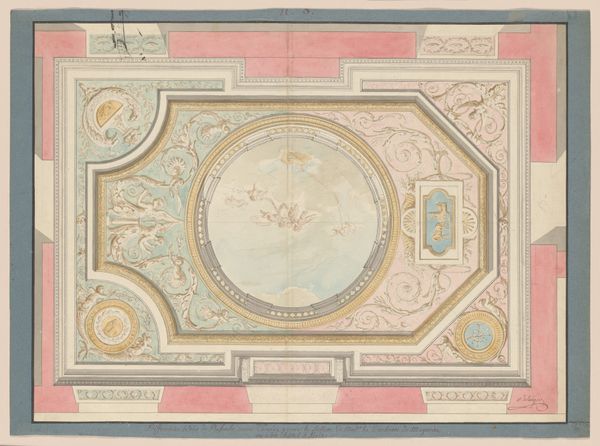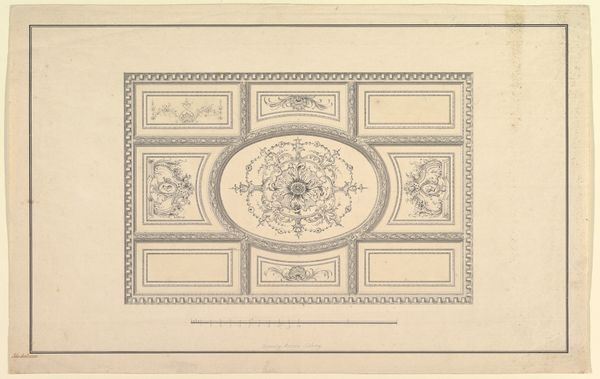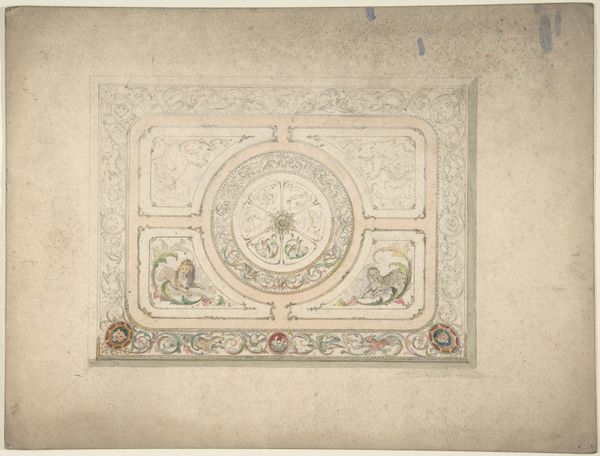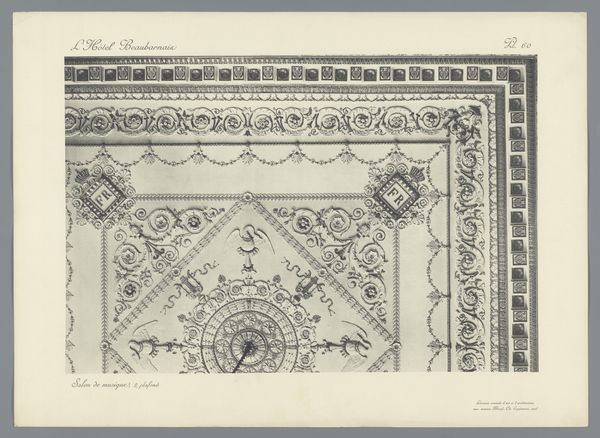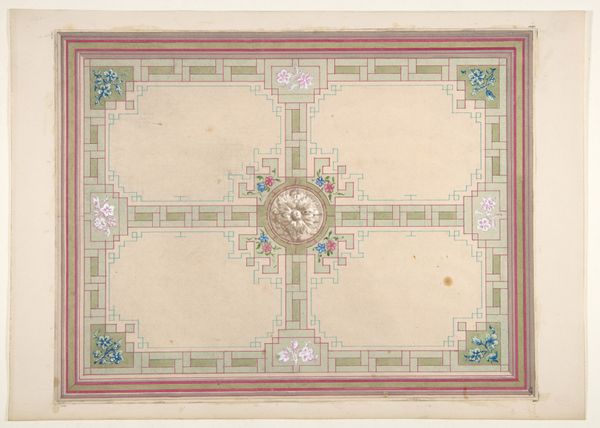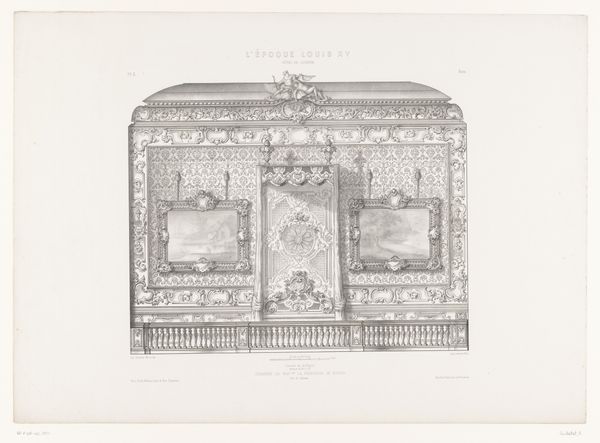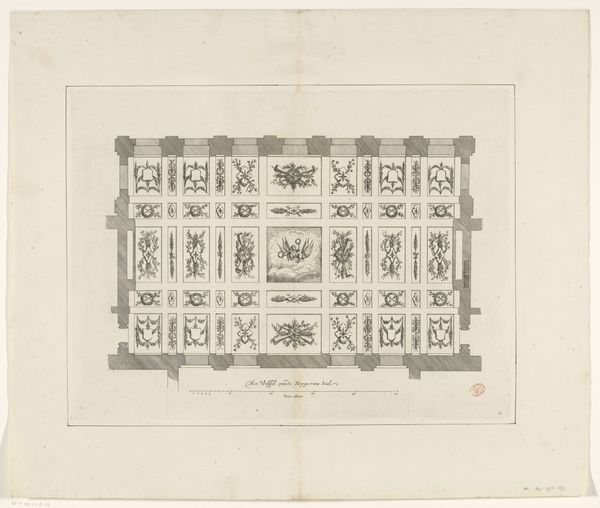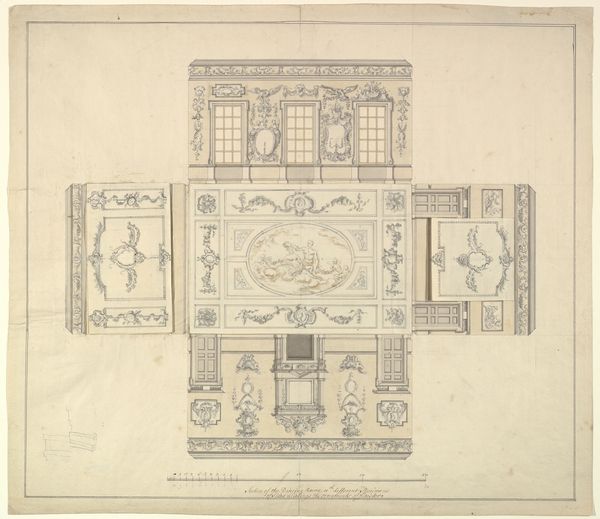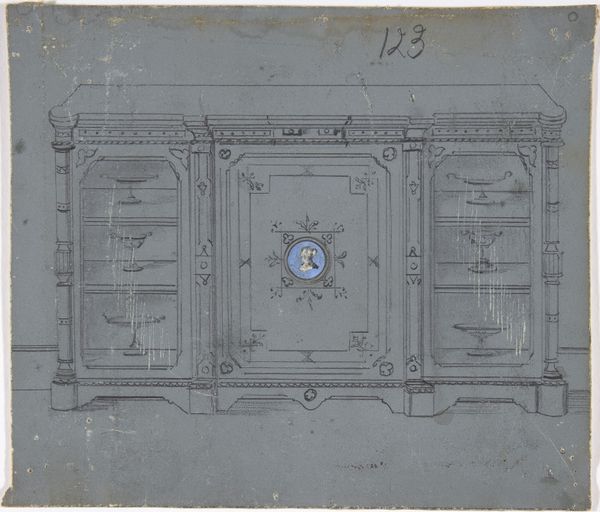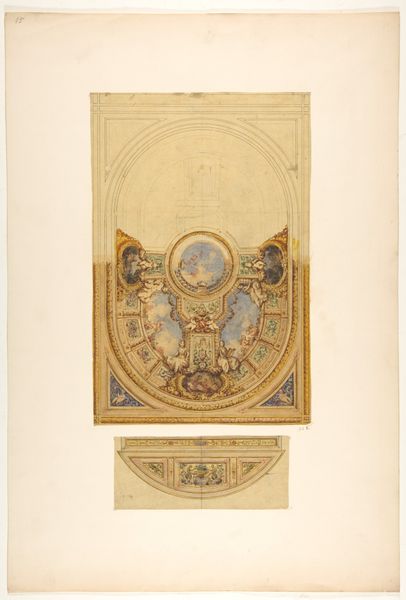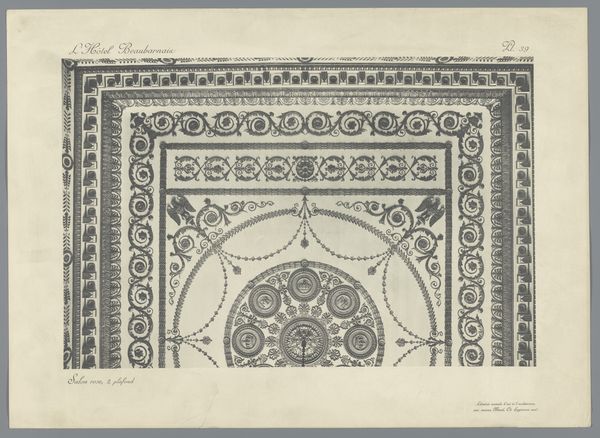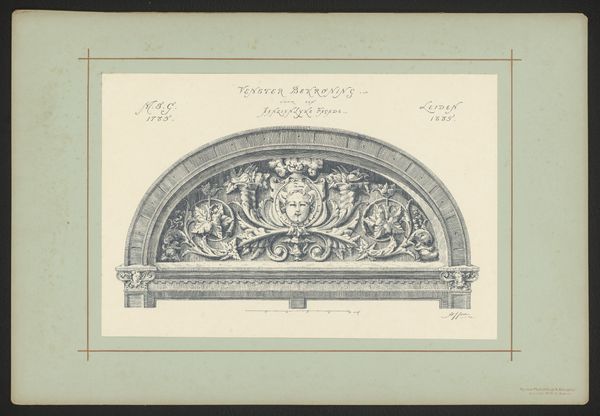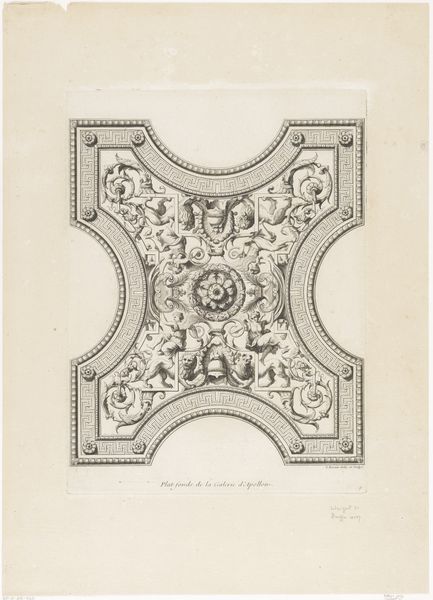
Ceiling of Dining Room, Spencer House, St. James Palace, London, about 1870 1865 - 1875
0:00
0:00
drawing, print, watercolor
#
drawing
#
water colours
# print
#
watercolor
#
decorative-art
Dimensions: sheet: 7 1/16 x 11 3/4 in. (17.9 x 29.8 cm)
Copyright: Public Domain
Editor: Here we have Frederick Sang's "Ceiling of Dining Room, Spencer House, St. James Palace, London," from around 1870, a watercolor and print piece. The precision in rendering this decorative ceiling is striking; I wonder about its function beyond pure aesthetics. What catches your eye about this work? Curator: Immediately, I'm drawn to the labor inherent in producing this detailed image, particularly considering it's a representation *of* labor. Think of the artisans who physically crafted that ceiling, their skills, the materials they sourced—plaster, pigments, perhaps even precious metals. This drawing serves as a record of that physical process, but also hints at the social structure required to commission such work. It’s a document of production on multiple levels, isn’t it? How does that relate to its context as decorative art? Editor: I hadn’t thought of it that way. It’s easy to get lost in the surface beauty and overlook the layers of making, from the ceiling itself to Sang's print. I’m curious, what materials would have been involved in such work? Curator: The original ceiling would involve plasterwork for the moldings and perhaps fresco techniques for the painted elements. The watercolour and print materials offer an intriguing contrast – a relatively accessible medium capturing a very exclusive craft. Notice the way the artist recreates texture and light, almost simulating the opulence of the original. In that way, it gives greater material and access to a product. Editor: So the print democratizes, in a way, the experience of the aristocracy’s dining room ceiling? I didn't consider the social context so strongly influencing the materials. Curator: Exactly! And it asks us to consider: whose dining room ceilings are being recorded and consumed? By whom, and through what material means? Editor: That's a fascinating point. I’ll definitely look at decorative art differently now, seeing it as more than just surface decoration, but also as a tangible representation of social structures. Thanks for sharing that perspective!
Comments
No comments
Be the first to comment and join the conversation on the ultimate creative platform.
